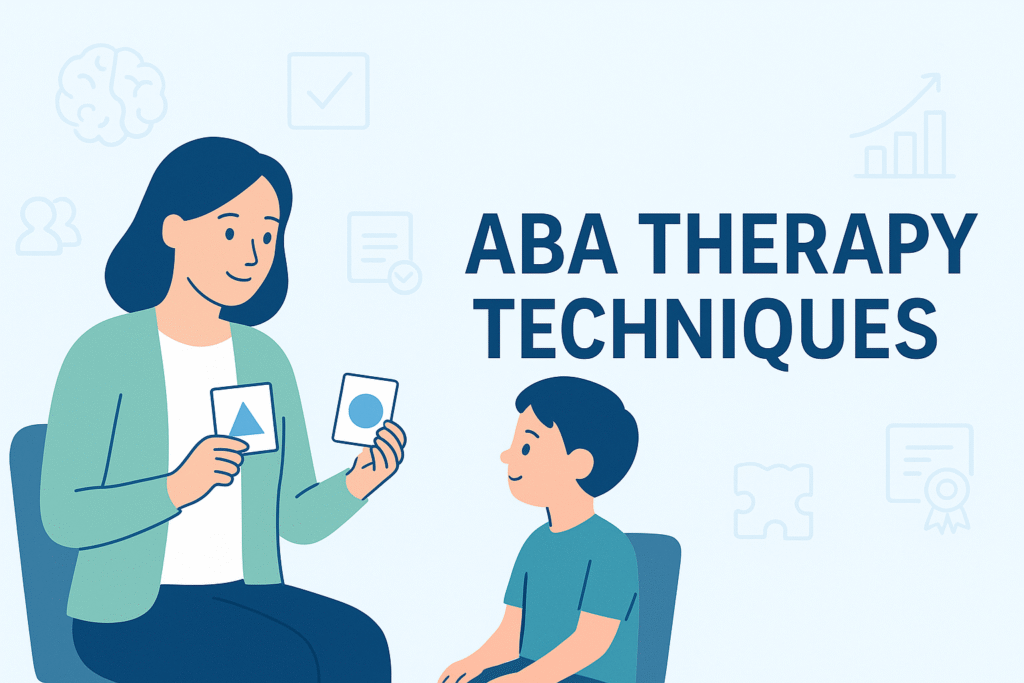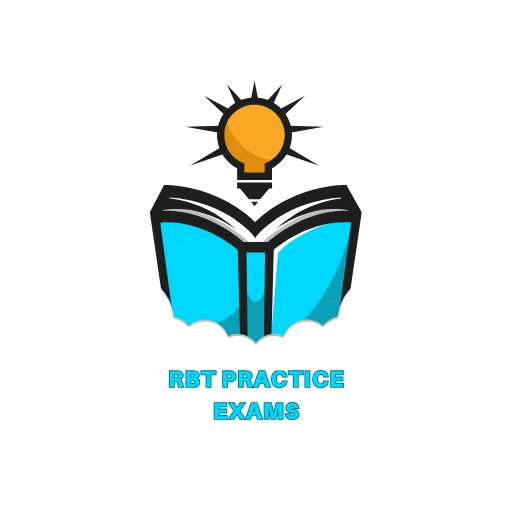Applied Behavior Analysis, or ABA, has become one of the most trusted approaches for teaching new skills and reducing challenging behaviors. At the heart of ABA are practical methods known as ABA therapy techniques. These strategies are backed by research and widely used to support individuals with autism and other developmental needs. Whether you’re a parent, teacher, or preparing for the RBT exam, understanding these techniques can make learning more effective and meaningful.
Table of Contents

What Are ABA Therapy Techniques?
ABA therapy techniques are structured teaching methods used to encourage positive behaviors and reduce unwanted ones. They rely on principles of behavior science, focusing on reinforcement, skill-building, and step-by-step learning. Unlike one-size-fits-all approaches, ABA techniques are tailored to each person’s needs, making them adaptable in schools, clinics, and at home.
Core ABA Techniques Every Therapist Should Know
Let’s look at the most widely used ABA therapy techniques and why they matter.
Positive Reinforcement
This is the backbone of ABA. When a desired behavior is followed by a rewarding outcome, the behavior is more likely to happen again. Rewards might include praise, a favorite toy, or extra playtime. For example, if a child cleans up their toys and gets verbal praise, they’re encouraged to repeat that behavior.
Discrete Trial Training (DTT)
DTT breaks skills into small, manageable steps. Each step is taught with clear instructions, practice, and feedback. It’s often used for early learners who benefit from structure and repetition. For example, teaching colors might involve presenting a red card and prompting the child to say “red.” Over time, the prompts are reduced until the child answers independently.
Natural Environment Teaching (NET)
While DTT is structured, NET focuses on teaching in everyday settings. Learning happens during play, meals, or daily routines. If a child wants a snack, the therapist might use that moment to practice requesting skills. This makes learning more natural and helps skills stick.
Task Analysis & Chaining
Some skills are complex, like brushing teeth or tying shoes. ABA breaks them into smaller steps (task analysis). Then chaining is used to teach those steps in order. Forward chaining starts from the first step, while backward chaining teaches the final step first so learners feel immediate success.
Prompting & Fading
Prompts are cues or guidance that help learners perform a task. They might be physical (like hand-over-hand guidance), verbal, or visual. Fading is the gradual removal of these prompts until the person can do the task independently.
Generalization & Maintenance
Learning doesn’t end once a skill is mastered in one setting. Generalization ensures skills carry over to new places, people, and situations. Maintenance makes sure the skill continues over time. For example, a child who learns to greet their therapist should also be able to greet classmates and family members.
Why Are ABA Therapy Techniques Effective?
ABA therapy techniques work because they are evidence-based and personalized. Research shows that consistent use of reinforcement and structured teaching can lead to significant improvements in communication, social skills, and independence. These techniques don’t just reduce challenges — they open doors to meaningful learning and participation in daily life.
ABA Therapy in Everyday Life (Parent & Teacher Applications)
Parents and teachers can apply ABA strategies at home and in classrooms. Here are a few practical examples:
Morning Routines: Use task analysis and chaining to help a child learn to dress independently.
Classroom Learning: Apply positive reinforcement to encourage participation.
Playtime: Use NET to teach sharing and turn-taking.
Homework Time: Fade prompts gradually so the child learns to complete assignments independently.
The beauty of ABA is its flexibility. Techniques can be adapted to fit different ages, skill levels, and learning environments.
Frequently Asked Questions (PAA-Optimized) What is the most common ABA therapy technique?
Positive reinforcement is the most widely used technique. It’s simple, effective, and forms the foundation for many other ABA strategies.
How do ABA therapy techniques help with autism?
ABA therapy techniques help children with autism learn communication, social, and daily living skills. By breaking tasks into small steps and using reinforcement, children can build confidence and independence.
Are ABA therapy techniques only for children?
No. While often used for children with autism, ABA strategies can benefit teens and adults, including those with developmental disabilities, behavioral challenges, or skill-building needs.
Can ABA therapy techniques be used at home?
Yes. Parents can use ABA strategies in everyday routines. With proper training, families can reinforce learning outside therapy sessions, making progress faster and more consistent.
Preparing for the RBT Exam with ABA Therapy Knowledge
If you’re working toward becoming a Registered Behavior Technician (RBT), mastering these techniques is essential. The exam often tests your knowledge of reinforcement, prompting, data collection, and behavior reduction strategies.
Practicing with realistic study tools will make you feel more confident. Try:
rbt practice exam
rbt practice test
rbt mock test
These resources mirror real exam questions and help you apply ABA concepts in practical scenarios.
Resources for Learning More About ABA
If you’d like to go deeper, check out these resources:
BACB – the official certification board for ABA professionals.
Applied Behavior Analysis (Wikipedia) a useful overview of ABA principles and history.
Conclusion
ABA therapy techniques provide practical, research-backed methods for teaching new skills and improving everyday life. From positive reinforcement to natural environment teaching, these strategies are flexible and effective for learners of all ages.
If you’re preparing for the RBT exam, now is the perfect time to strengthen your knowledge. Start with a free rbt practice exam today and build the confidence you need to succeed.
